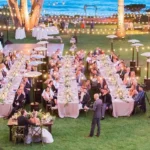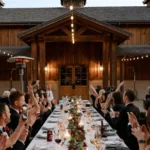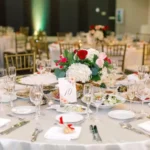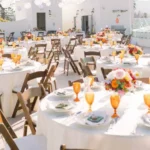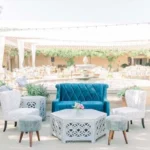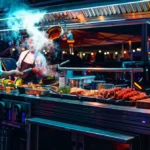Are you struggling to create a captivating atmosphere for your tented event? Proper lighting and décor integration can transform your space from ordinary to extraordinary. This article will guide you through selecting the right lighting options, coordinating décor elements, and blending natural and artificial light sources. You’ll learn practical tips for seamless integration and gain inspiration from stunning tent setup examples. By the end, you’ll have the knowledge to elevate your event’s ambiance using Coleman lanterns, fairy lights, and wrought iron fixtures, creating a memorable experience for your guests.
Key Takeaways
- Lighting and décor transform plain tents into beautiful, inviting spaces that set the mood for events
- Proper planning and integration of lighting and décor elements create cohesive and visually appealing tent setups
- Various lighting techniques, from fairy lights to chandeliers, can enhance ambiance and create focal points
- Balancing natural and artificial lighting sources adds depth and dimension to tent environments
- Professional assistance and thorough testing ensure the successful implementation of lighting and décor in tent setups
Understanding the Importance of Lighting and Décor in Tent Setups
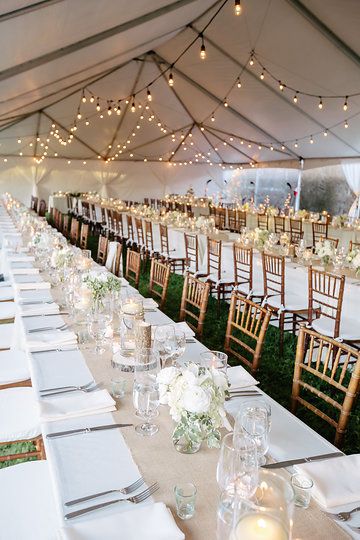
Lighting and décor play a crucial role in creating stunning tent setups. They transform plain plastic structures into beautiful, inviting spaces that set the mood for any event. Proper lighting enhances the ambiance, while thoughtful décor adds personality and charm.
The right lighting setup can dramatically affect the energy of an event. From soft, warm glows to bright, vibrant illumination, the choice of lumens and placement can make or break the atmosphere. Décor complements lighting by adding texture, color, and visual interest to the space.
Even on a tight budget, creative lighting and décor solutions can elevate a tent setup. Simple string lights, strategically placed fabric drapes, or DIY centerpieces can have a significant impact. The key is balancing beauty and functionality to create a memorable event space.
Choosing the Right Lighting Options for Your Tent
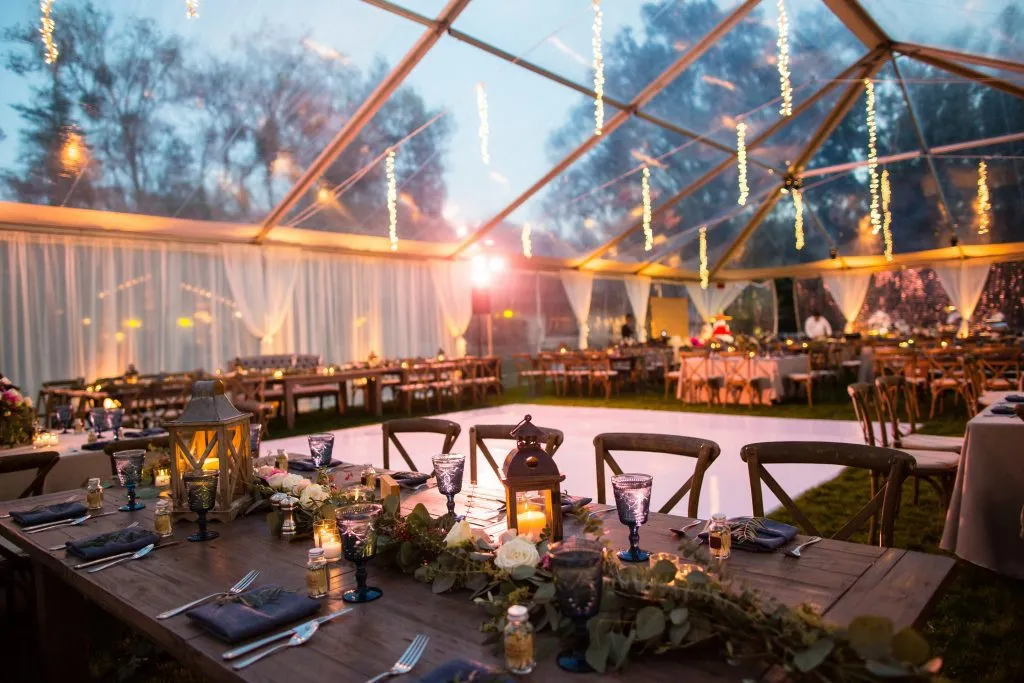
Selecting the right lighting options for a tent setup involves considering mood, color schemes, and practical installation aspects. Proper lighting enhances the event experience, from creating atmosphere to illuminating menus. This section explores how to choose mood lighting, incorporate color with lights, and address practical considerations like heat output and chandelier placement.
Selecting Mood Lighting to Create Atmosphere
Selecting mood lighting is essential for creating the desired atmosphere in a tent setup. Soft, warm lights can evoke intimacy for a romantic wedding, while vibrant colors might suit a lively Christmas party. Solar-powered options offer eco-friendly solutions for outdoor events, with solar panels providing energy-efficient illumination throughout the night.
Incorporating Color Schemes With Lights
Color-changing LED lights offer a versatile solution for incorporating color schemes in tent setups. Event planners can use these lights to create different moods throughout the space, adjusting colors to match the event’s theme or time of day. For outdoor events, portable flashlights with colored filters provide a creative way to add pops of color in specific areas. Propane-powered lanterns with colored glass can also offer a unique lighting option, combining warmth and color in one fixture.
Practical Considerations for Lighting Installation
Event organizers must consider practical aspects when installing lighting in tent setups. Adequate power supply and safe wiring are essential for seamless operation. The design should account for heat output from fixtures to ensure guest comfort. Proper rope placement can secure chandeliers and other hanging lights, drawing attention to key areas like the dance floor. Careful planning ensures safety and enhances the overall event experience.
Enhancing Tent Décor With Creative Lighting
Creative lighting enhances tent décor, transforming spaces for ceremonies and receptions. This section explores using fairy lights in unique configurations, incorporating lanterns for a cozy ambiance, and using chandeliers as focal points. These techniques improve aesthetics along the tent’s perimeter and interior, creating memorable settings for wedding days while considering electricity needs.
Utilizing Fairy Lights in Unique Configurations
Event planners can create enchanting atmospheres by utilizing fairy lights in unique configurations. Draping these versatile lights across tent ceilings or wrapping them around trees adds a magical glow to wedding receptions. For a modern twist, professional lighting experts combine fairy lights with glow sticks to create eye-catching installations. These creative light arrangements transform tented spaces, enhancing the overall ambiance and creating memorable experiences for guests.
Incorporating Lanterns for Cozy Ambiance
Lanterns offer a versatile and cozy lighting option for tent setups. Event planners can hang crystal lanterns from tent poles or place paper lanterns on tables to create warm, inviting spaces. Battery-operated lanterns provide a safe alternative to traditional candles, illuminating pathways and seating areas for outdoor events. Organizers can incorporate light fixtures with dimming capabilities to enhance the ambiance, allowing for adjustable lighting throughout the event.
Using Chandeliers as a Focal Point
Chandeliers serve as striking focal points in tent setups, drawing the eye upward and adding elegance to the space. Event planners can suspend crystal chandeliers from the tent’s ceiling, complementing them with strategically placed christmas lights to create a magical ambiance. For a unique twist, some organizers incorporate textile elements into chandelier designs or use bulb-style fixtures to achieve a more rustic look. These eye-catching installations not only provide functional lighting but also enhance the overall décor, making them perfect backdrops for photo booth areas.
Blending Natural and Artificial Lighting Effectively
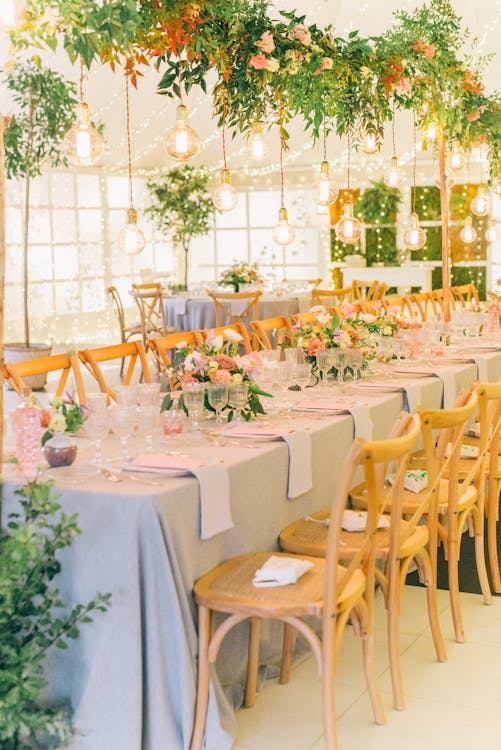
Blending natural and artificial lighting in event tents creates a balanced atmosphere. This section explores capitalizing on ambient light sources, using darker décor for contrast, and layering lights for depth. These techniques enhance the overall ambiance, transforming tents into captivating spaces, whether for a fairy tale wedding or a tea party.
Capitalizing on Ambient Light Sources
Event planners can capitalize on ambient light sources to create stunning tent setups. The sky provides natural illumination during daytime events, while bistro lights and candles add romance as evening approaches. Strategically placing reflective surfaces near openings enhances the effect of ambient light, creating a warm and inviting atmosphere:
| Time of Day | Ambient Light Source | Effect |
|---|---|---|
| Daytime | Sky | Natural, bright illumination |
| Evening | Bistro lights | Soft, romantic glow |
| Night | Candles | Intimate, flickering ambiance |
Creating Contrast With Darker Décor Elements
Event planners use darker décor elements to create striking contrasts in tent setups. Deep-colored drapes or curtains can frame lighter areas, drawing attention to key spaces like dance floors or dining sections. By strategically placing dark elements, organizers highlight brighter features, enhancing the overall visual impact of the event space.
Layering Lights for Depth and Dimension
Event planners layer lights to create depth and dimension in tent setups. They use different light sources at varying heights and intensities to add visual interest and guide guests’ focus. This technique involves combining overhead lighting, such as chandeliers or string lights, with lower-level illumination from table lamps or floor-standing fixtures. The result is a multi-dimensional lighting scheme that enhances the overall ambiance:
| Light Layer | Fixture Type | Purpose |
|---|---|---|
| Overhead | Chandeliers, String Lights | General illumination, Create atmosphere |
| Mid-level | Wall Sconces, Uplights | Accent specific areas, Add depth |
| Low-level | Table Lamps, Floor Lamps | Intimate lighting, Define spaces |
Coordinating Décor Elements With Lighting Styles
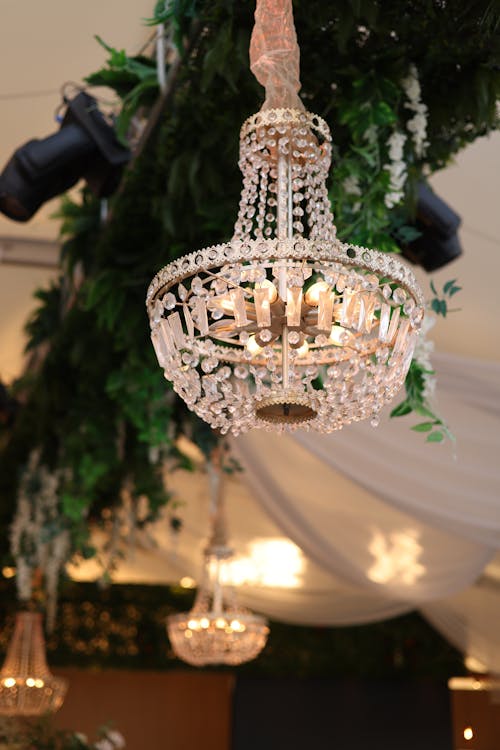
Coordinating décor elements with lighting styles enhances tent setups. This section explores matching themes from rustic to elegant, using color in décor to reflect light, and integrating fabrics and textures with lighting. These techniques create cohesive and visually appealing event spaces, ensuring that lighting and décor work together seamlessly.
Matching Themes From Rustic to Elegant
Event planners match lighting and décor themes to create cohesive tent setups. They use warm, soft lighting with natural elements like wood and burlap for rustic events. Elegant affairs feature crystal chandeliers and sleek metallic accents. By aligning lighting fixtures and décor items with the chosen theme, organizers create immersive environments that enhance the overall event experience.
Using Color in Décor to Reflect Light
Event planners use color strategically in décor to reflect and enhance lighting in tent setups. Light-colored fabrics and surfaces bounce light around the space, creating a brighter atmosphere, while darker hues absorb light for a more intimate feel. By selecting décor items in colors that complement the lighting scheme, organizers can create visually striking effects that transform the tent environment:
| Décor Color | Light Reflection | Effect |
|---|---|---|
| White | High | Bright, open atmosphere |
| Pastels | Medium | Soft, welcoming glow |
| Deep jewel tones | Low | Rich, intimate ambiance |
Integrating Fabrics and Textures With Lighting
Event planners integrate fabrics and textures with lighting to create visually appealing tent setups. They use sheer curtains to diffuse light, creating soft, romantic atmospheres. Textured fabrics like velvet or sequined tablecloths reflect light uniquely, adding depth to the space. By carefully selecting fabrics and textures that complement the lighting design, organizers enhance the overall ambiance and create memorable event experiences:
- Sheer curtains: Diffuse light for a soft glow
- Velvet tablecloths: Absorb light for a rich, luxurious feel
- Sequined accents: Reflect light for a sparkling effect
- Textured wall coverings: Create interesting shadow patterns
Practical Tips for Seamless Integration
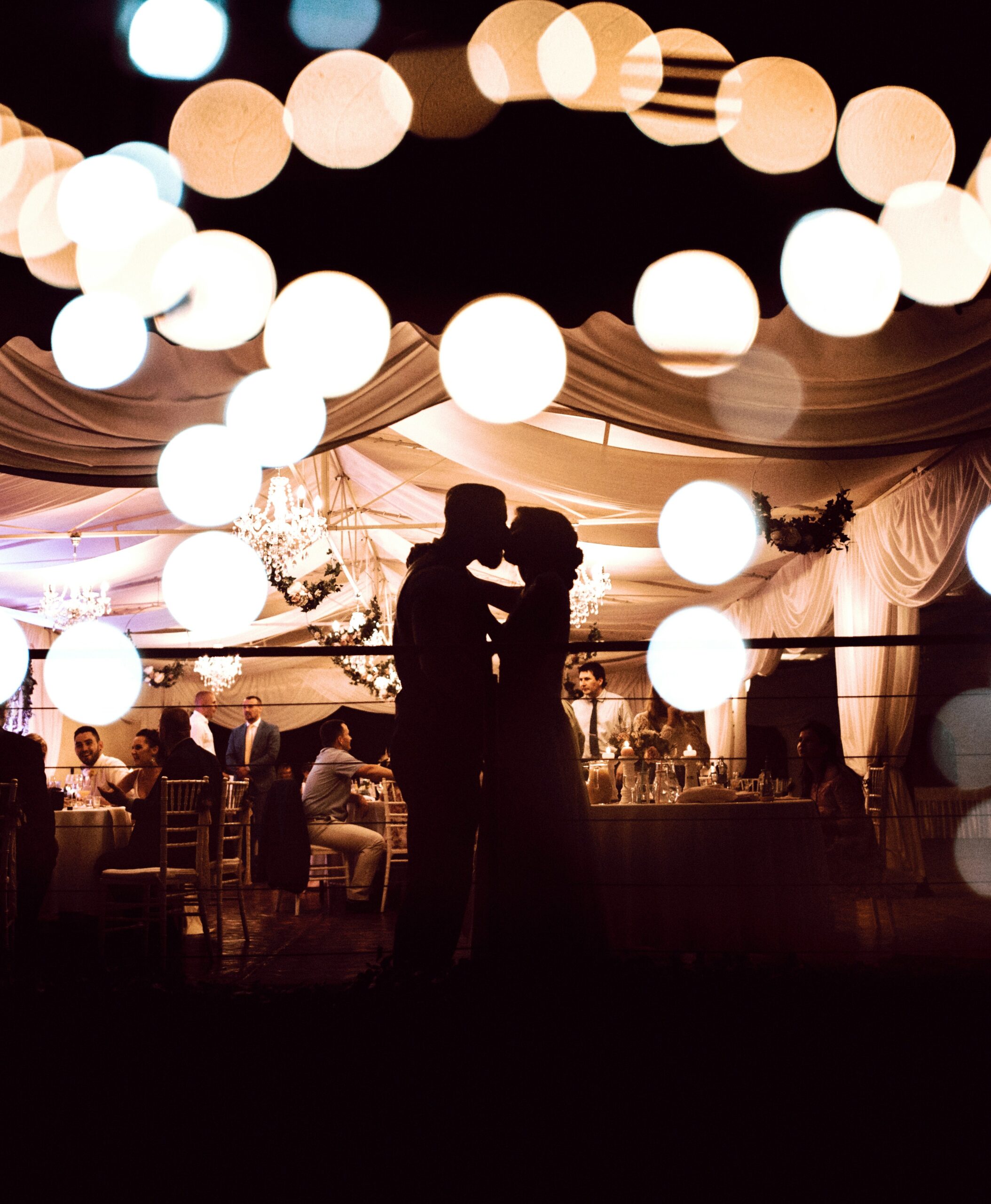
Seamless integration of lighting and décor in tent setups requires careful planning and execution. This section covers essential tips for successful implementation, including layout planning, lighting effect testing, and professional assistance. These practical strategies help event organizers create stunning environments that blend lighting and décor harmoniously.
Planning Layout Before Setup
Event planners carefully map out tent layouts before setup to ensure seamless integration of lighting and décor. They consider the flow of traffic, placement of key elements like dance floors and stages, and optimal positioning of lighting fixtures. This planning stage allows organizers to identify potential challenges and create a cohesive design that maximizes space and enhances the overall atmosphere. A well-thought-out layout serves as a blueprint for efficient setup and successful event execution:
- Measure tent dimensions and create scaled floor plans
- Mark locations for power sources and lighting fixtures
- Designate areas for different activities (dining, dancing, socializing)
- Plan pathways for guest movement and emergency exits
- Allocate space for décor elements and focal points
Testing Lighting Effects Before the Event
Event planners test lighting effects before the event to ensure optimal results. They set up fixtures, adjust settings, and observe how different lighting combinations interact with the tent’s décor. This process allows organizers to identify and address any issues, such as unwanted shadows or glare, before guests arrive. By conducting thorough lighting tests, event planners can create the desired ambiance and ensure a seamless integration of lighting and décor:
- Set up all lighting fixtures according to the layout plan
- Test different lighting intensities and color combinations
- Adjust fixture positions to eliminate shadows and hot spots
- Verify that all lighting controls function properly
- Ensure backup power sources are available and operational
Engaging Professional Services for Setup Assistance
Event planners often engage professional services for setup assistance to ensure seamless integration of lighting and décor in tent setups. These experts bring specialized knowledge and equipment, helping organizers achieve desired effects efficiently. Professional assistance can be particularly valuable for complex lighting installations or large-scale events, ensuring safety and compliance with regulations. By collaborating with experienced professionals, event planners can focus on other aspects of the event while ensuring a stunning and well-executed lighting and décor setup:
- Consult lighting designers for custom solutions
- Hire audiovisual technicians for complex setups
- Engage decorators for cohesive theme implementation
- Work with electricians to ensure proper power distribution
- Collaborate with rental companies for specialty equipment
Showcasing Inspiring Tent Setup Examples
This section presents inspiring tent setup examples through real-life event case studies, popular themes, and diverse lighting techniques. It showcases practical applications of lighting and décor integration, highlighting successful event designs and innovative approaches. These examples provide valuable insights for event planners seeking to create stunning tent environments.
Real-Life Event Case Studies
Event planners study real-life case studies to gain insights into successful tent setup designs. These examples showcase innovative lighting and décor integration techniques used in various events. By examining these case studies, organizers learn practical strategies for creating stunning environments that meet client expectations and enhance guest experiences:
| Event Type | Lighting Technique | Décor Element | Outcome |
|---|---|---|---|
| Wedding | Fairy lights canopy | Floral centerpieces | Romantic atmosphere |
| Corporate gala | LED uplighting | Modern art installations | Sleek, professional ambiance |
| Music festival | Laser projections | Inflatable sculptures | Energetic, immersive experience |
Highlighting Popular Event Themes and Décor Styles
Event planners showcase popular themes and décor styles to inspire tent setup designs. Rustic chic remains a favorite, featuring natural elements like wood and burlap paired with soft, warm lighting. Bohemian themes incorporate colorful textiles and eclectic lighting fixtures, creating a free-spirited atmosphere. Modern minimalist designs utilize sleek furniture and strategic lighting to create clean, sophisticated spaces. These popular styles demonstrate how lighting and décor work together to transform tent environments and set the mood for various events.
Visualizing Diverse Lighting Techniques in Tent Settings
Event planners employ diverse lighting techniques to create stunning tent environments. They use uplighting to highlight architectural features, string lights for a whimsical atmosphere, and color-changing LEDs to set dynamic moods. Spotlights draw attention to focal points, while dimmable fixtures allow for adjustable ambiance throughout the event. These varied techniques enable organizers to craft unique and memorable experiences for guests:
| Lighting Technique | Effect | Best Used For |
|---|---|---|
| Uplighting | Highlights tent structure | Formal events, weddings |
| String lights | Creates whimsical atmosphere | Outdoor parties, receptions |
| Color-changing LEDs | Sets dynamic moods | Dance floors, themed events |
| Spotlights | Draws attention to focal points | Stage performances, displays |
| Dimmable fixtures | Allows adjustable ambiance | Multi-phase events, transitions |
Conclusion
Seamlessly integrating lighting and décor transforms tent setups into captivating event spaces. Thoughtful lighting choices and coordinated décor elements create atmosphere, enhance themes, and guide guests’ experiences. Careful planning, from layout design to on-site testing, ensures successful implementation of lighting and décor concepts. By leveraging professional expertise and drawing inspiration from diverse techniques, event planners can craft memorable environments that leave lasting impressions on attendees.

